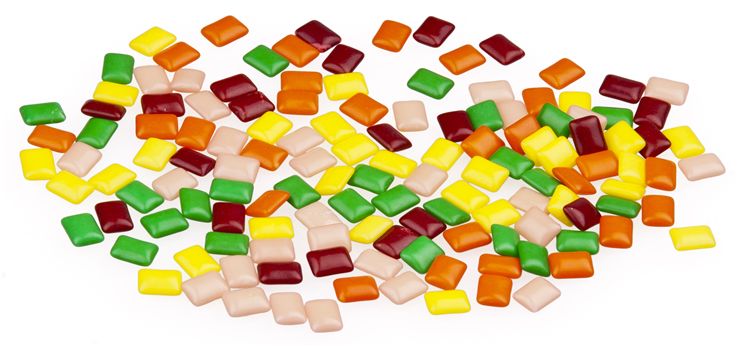Chicle Gum - History and Characteristics
Chicle is the ingredient in the production of chewing gum. It is a natural product of trees with gum characteristics traditionally used in making chewing gums.
Our prehistoric Neolithic ancestors used various resins or birch bar tars to chew for either pleasure or dental health. However, out of all the sources of gum used in those ancient times, one managed to remain popular modern age and be responsible for the rise of the modern chewing gum industry that we know today. This substance was Chicle. A gum made naturally by evergreen trees most commonly found in Central America. Aztecs often used these gums because they could easily be found. It entered everyday use in those areas after European settlers immigrated en masse to the New World in the 17th and 18th centuries. But the excellent natural chewing gum substance in millions of trees in Central America was not reason enough to make it famous worldwide. This happened after former Mexican President Antonio Lopez de Santa Anna visited New York in 1860, bringing with him Chicle so that American chemists would try to make an alternative form of rubber (which was expensive to manufacture in mass quantities from natural sources).
Thomas Adams, secretary of Santa Anna, recognized the potential of Chicle. After a few failed attempts at creating rubber replacements, he decided to emulate the use case he knew from first-hand experience extensively – to make chewing gum. In 1877, He established the first modern chewing gum company and released to the market "Adams New York Chewing Gum," followed by "Black Jack" in 1889 and "Chiclets" (1899), gum that remains on sale even today. The commercial success of Adams' chewing gums can also be attributed to his partnership with the gum-maker and industrialist William Wrigley Jr. They enabled the comprehensive promotion of chicle-based chewing gums across the United States.

Since the popularization of the Chicle in the United States, many chewing gum companies ramped up their production to levels that just kept climbing as years passed. Chewing Gum popularization in the USA caused the incredible demand for natural chicle gum that could only be procured from the Central American countries of Mexico, Belize (known as British Honduras until 1973), and Guatemala. Trees found in these countries were incredibly numerous, but they also produced the high-quality gum that the most prominent American companies highly desired.
William Wrigley Jr., American Chicle Company, and Beech-Nut Packing Company did the lion's share of chicle commerce. As for the largest markets for Chicle, Mexico commanded the largest share of almost 80% of all Chicle traveling for North America came from them. However, since the early 1900s trouble with weather and increased demand from the United States, chicle manufacturers started to escalate their production to almost unattainable levels, tapping the trees for the gum excessively, causing growth problems and many other issues that even forced the Mexican government to step in and introduce official laws for manufacture and sale of Chicle. The US government also interfered, raising higher taxes on chicle imports. Tariffs prompted large gum manufacturers to buy large amounts of land that housed chicle trees and transport raw Chicle to the US via Canada, where taxes were much smaller.
The age of mass-produced chicle gum faded in the 1960s when chewing gum manufacturers started switching from natural rubbers to more affordable and easier-to-make butadiene-based synthetic rubbers.
